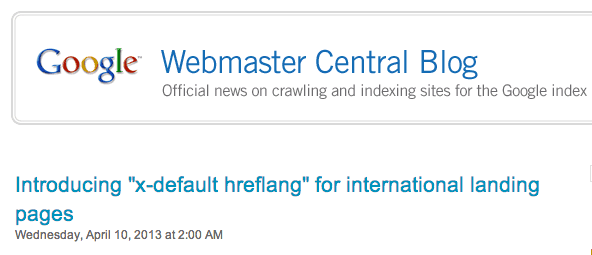A few days ago Google made an announcement on the Google Webmaster Central Blog introducing the “x-default hreflang” annotation which a webmaster can use to specify international landing pages. Within the same post Google offers a great example for how to appropriately utilize this new annotation.
Let’s say you own a website, www.example.com. Now you have 3 versions of this website, one for English speaking users within the UK, one for English speaking users within the USA, and lastly one for English speaking users within Australia. You’re main homepage features a country selector where visitors choose their country and proceed to the appropriate version of your website. So you have the following structure:
- http://example.com/en-gb: For English-speaking users in the UK
- http://example.com/en-us: For English-speaking users in the USA
- http://example.com/en-au: For English-speaking users in Australia
- http://example.com/: The homepage shows users a country selector and is the default page for users worldwide
The webmaster can utilize the new x-default hreflang annotation to let Google know that the main landing page on www.example.com does not target any specific language or locale, while the hreflang annotations within each different version will let Google know what language/locale those sites target. So the example code would be as follows:

Does hreflang=”x-default” still apply if it’s a global site but only uses English as the language? The only thing we change is the currency via the country selector.
— topspot-official.blogspot.com —
Well – technically since the currency changes – this would mean that different locales are targeted. So while the main landing page (prior to any current selection being done) would utilize x-default – you should change that once the current has been selected. —
Michael Boguslavskiy
[email protected]
[email protected]